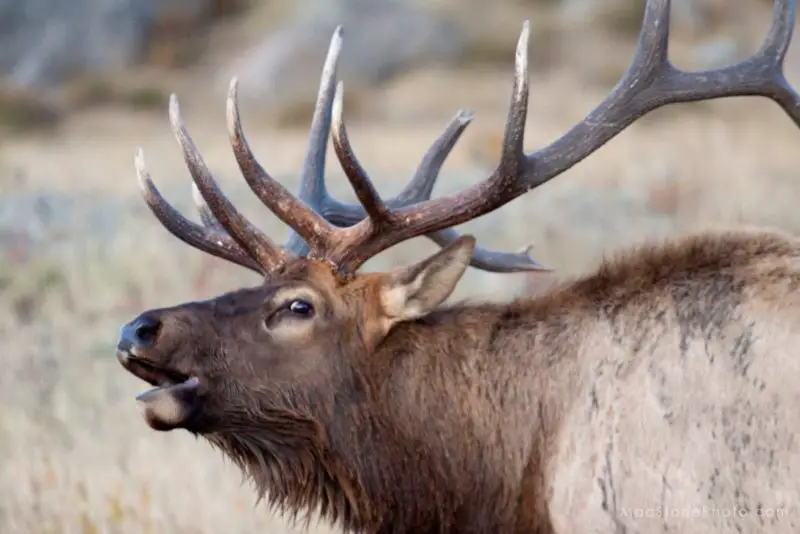Elk are one of nature’s finest works from the standpoint of aesthetic quality. They’re grand animals and counterparts of true wild country. Four subspecies of the North American elk still exist in the wild. They are Roosevelt elk, Tule elk, Rocky Mountain elk, and the Manitoban elk. Two subspecies, the Eastern and the Merriam’s elk, are extinct. We will look closer at all the elk subspecies, both surviving and extinct, to learn more about them.
Elk are among the largest members of the Cervidae or deer family. In the Cervidae family, the elk is smaller in size only to the Moose. It is one of the largest land animals in its range, which stretches from North America to Central and East Asia. A large adult bull elk can stand 5ft tall at the shoulder and weigh up to 1100 pounds.
Elk are imposingly large animals. Another defining characteristic of the elk is their large antlers. A bull elk’s antlers are handy for sparring or even all-out battle. During the rut, they are compelled to prove their dominance to establish their breeding right for that year.
Range of the Elk
North America’s elk population is somewhat stable. Their range extends through the continental United States and Canada.
There are also elk on Afognak, Raspberry, Etolin, and Zarembo islands off Alaska’s coast. The elk on Afognak and Raspberry Islands are Roosevelt elk. Their ancestors were transplanted from Washington State in 1929. The Etolin and Zarembo island elk descend from both Roosevelt and Rocky Mountain elk. Their ancestors were transplanted from Oregon in 1987.
Elk are native to North America and Eurasia. But they demonstrate a high degree of adaptability. They survive well in areas that are not their native habitat. Some of the places include Argentina and New Zealand.
They are most concentrated in the contiguous United States. There are also sizeable populations in neighboring Canada.
A Look at the Elk Subspecies
As mentioned, the North American group of elk had six subspecies, two of which are now extinct. Let’s examine each of them, starting with the surviving ones.
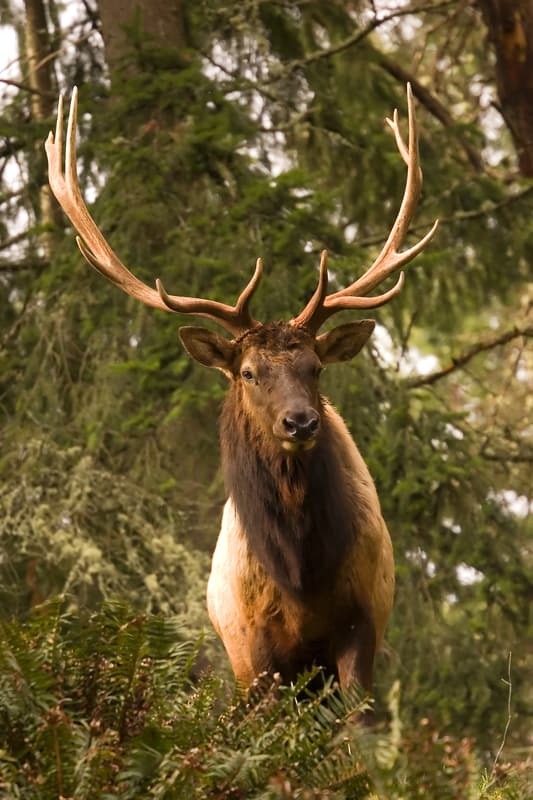
1. Roosevelt Elk (Olympic, Cervus Canadensis Roosevelt)
The name Roosevelt is eponymous for two U.S. presidents. Each of them made an effort to conserve this elk species. In 1909, President Theodore Roosevelt established the Mount Olympus National Monument. Its primary goal was to preserve this elk’s habitat and population. President Franklin Roosevelt upgraded this area’s status to Olympic National Park in 1937.
The Roosevelt elk is the largest of the four surviving elk subspecies and the third largest land animal native to North America. This elk can grow to a body length of 6 to 10-feet, with bulls being the larger of the two sexes. In height, they stand up to 5 feet tall at the shoulder. Cows weigh around 700 pounds on average. Bulls weigh from 850 up to 1100-pounds. There are larger but rare bulls from Afognak and Raspberry Islands in Alaska, weighing up to 1300-pounds.
Roosevelt Elk have a greyish to light brown body, a yellowish rump patch, dark chocolate brown legs, neck, and head. Bulls sport antlers, which can reach maximum lengths of up to 4-feet. Some Roosevelt Elk antlers have a three-point tip at the crown. Palmated antlers are also more common with Roosevelts than other Elk species.
Although they are slightly smaller by body mass, Rocky Mountain elk have larger head projections when looking at antler size.
Range Of The Roosevelt Elk
This large elk subspecies range extends from Northern California to Southern British Columbia, with a sizeable population on the Cascade and Coastal ranges’ western slopes. Washington State’s Olympic National Park is home to a herd, which numbers almost 5000 animals. They also live on the Raspberry and Afognak Islands in Alaska.
They are migratory animals, spending summer in the mountains and move to the lowlands in winter. In the wild, bulls can live up to 16 years, while females can reach 20 years. They live longer under captivity, reaching 25 years.
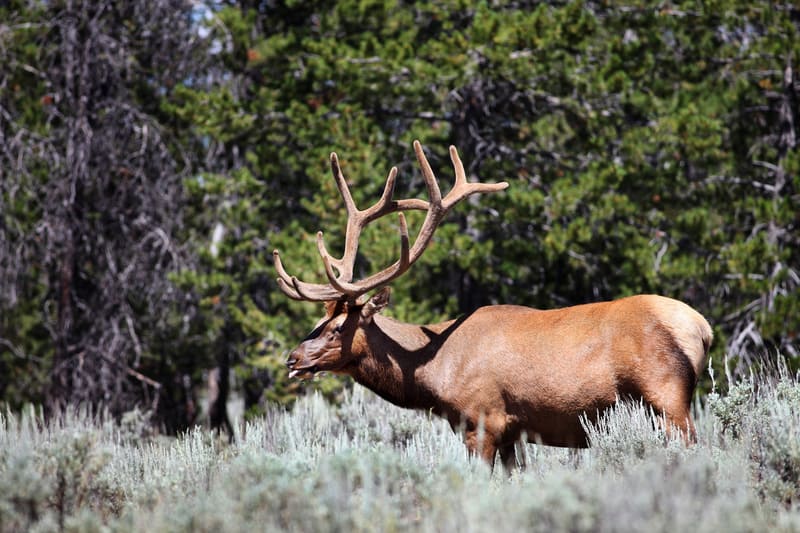
2. Rocky Mountain Elk
The Rocky Mountain elk is another large elk subspecies. Zoologists rank the Rocky Mountain elk and Roosevelt elk as the largest subspecies, as they have a similar body mass. Rocky Mountain Elk grow to a length of between 6.5 to 8.5 feet long, and they have an average height of 4 to 5-feet at the withers, almost the same height as their Roosevelt’s relatives.
Bulls weigh between 700 and 1000-pounds, while cows weigh 500 to750 pounds. They sport a golden-brown coat, with the head, neck, and legs being dark brown. In winter, their coat takes on a grayish brown shade and is longer to provide ample insulation. Males are larger than females and have a dark brown mane on the throat.
Range of the Rocky Mountain Elk
The Rocky Mountain elk prefer upland forests, mostly in mountainous regions where they spend the summer and fall months. During winter, they escape the deep snow of the high country and venture into the lowlands. Sometimes, they leave the forests for the lowland grasslands and venture back to the forests later in the day.
They are many in the wild, with estimations putting their population at 1 million individuals. They are, especially, plentiful in the Yellowstone ecosystem. This is the base for their introduction to other regions like Washington State and Wyoming. You will also find large herds in Colorado, Arizona, New Mexico, North Dakota, and Utah, where their introduction was a measure to replace threatened or extinct populations.
In Canada, their ranges include Jasper and Banff National Parks in Alberta and Yoho and Kootenay in British Columbia. They can live for 10-14 years in the wild but can go up to 16-17 years in captivity.
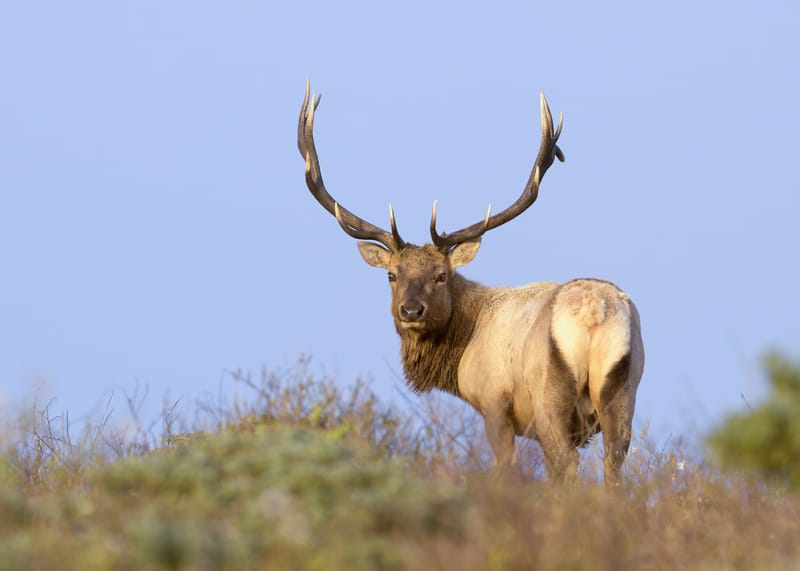
3. Tule Elk
The Tule Elk is one of the subspecies with a low population and less diverse range. Presently, there are only around 4000 individuals in the wild. The Tule Elk’s sole range is within the state of California.
Tule Elk comes by their name because Tule is a big part of their ecosystem and a big part of their diet. Tule is a type of sedge that grows on freshwater marshes in California.
Reports indicate that there were over 500,000 Tule Elk in the wild when Europeans arrived. However, overhunting cut their population down to only ten in the 1870s. Conservation measures have had promising results. Their numbers have bounced back remarkably though they are still vulnerable.
Tule Elk is the smallest of the elk subspecies. At times they are referred to as dwarf wapiti. Some Tule Elk are roughly half the size of Roosevelt’s elk. However, the epithet may be misleading as there have been occasions of specimens weighing almost 900-pounds. These are exceptions, though. Across the population, bulls have an average weight of 450-500 pounds, while cows weigh 400-450 pounds.
They are tan, with a reddish tone around the neck, which is deep red in males, with more hair in this region. The rump area is white, and they have stubby tails. Calves have a brown coat with white spots.
Range of the Tule Elk
The Tule elk exist around California’s marsh, grasslands, and grassy hills adjacent to their coastal areas. Despite being on the verge of extinction in the late 19th century, conservation measures have served to grow their population to around 5700 animals in the wild. You can find significant herds in Point Reyes National Seashore, Carrizo Plain National Monument, Lone Pine in the Owen’s Valley, and Coyote Ridge in San Jose.
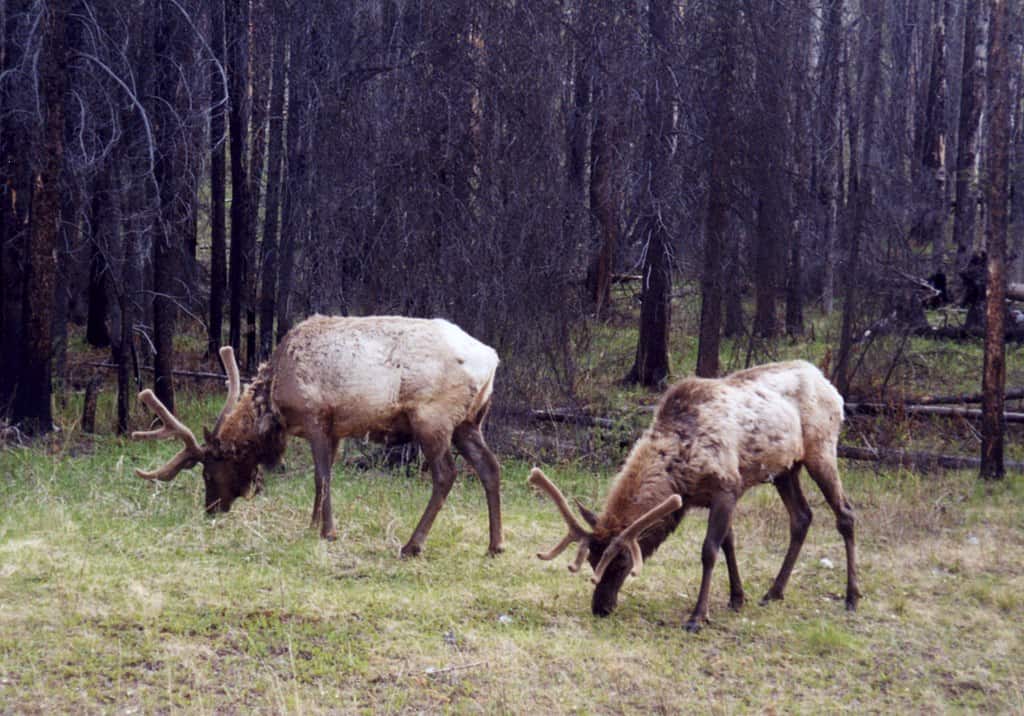
4. Manitoban Elk
The last of the four surviving elk subspecies is the Manitoban wapiti or elk. It is almost as large as the Rocky Mountains elk but has short antlers. Adults range between 7 and 8 feet in length and weigh 600 to 800-pounds.
Their coat has a darker hue than the other subspecies, taking a deep copper brown shade on the head, neck, mane, and feet. The bodies have a lighter yellow-brown shade, with a light tan rump patch.
Calves normally have a yellowish-brown spotted coat, which helps them blend with their surroundings. The adult’s coat can have a grayish coloration in winter, where it is also thicker.
Range of the Manitoban Elk
This wapiti subspecies in the US are found mainly in North Dakota and northeastern Montana. In Canada, they inhabit sections of the Canadian Prairies in Manitoba, north-central Alberta, and Saskatchewan. In the late 1800s, this subspecies was driven to the brink of extinction.
Only 500 Manitobans remained by the year 1900. Presently, there are improvements in its numbers. At this time, there are around 6500 animals in the wild.
Manitoban Elk have a lifespan of up to 14 years in captivity but less in the wild.
5. The Eastern Elk
The Eastern elk is one of the two extinct subspecies. The last known Eastern Elk was killed in September of 1877 in Pennsylvania.
They were large animals. Bulls weighed anywhere from 600 to 1000 pounds. Cows were 25% smaller. Mature bulls stood 50-60 inches tall at the withers. Mature bulls also had large antlers, which could reach 6-feet in length.
Overhunting and loss of habitat due to human settlement were the two main causes of extinction for the Eastern Elk.
6. The Merriam’s Elk
The Merriam’s elk is also extinct. They disappeared almost simultaneously with the Eastern elk in the late 19th century.
Merriam’s Elk was quite large, with thicker, more massive features, a heavier skull, and a wider set of nasal bones than today’s surviving subspecies. Their antlers were very thick and straighter tined than other elk. Their head, neck, and legs were more reddish. Source
They lived in the arid southwestern states of Arizona and New Mexico. Their extinction’s main reasons were unregulated overhunting and encroachment on their habitat by humans and their livestock.
The elk that lives in the southwestern United States today are Rocky Mountain Elk. Their ancestors were transplanted from the Yellowstone ecosystem.
In Summery
The elk is among the largest wild herbivores with a habitat ranging from North America to Eurasia.
There are four surviving subspecies in North America.
Two subspecies are gone, never to return. Eastern Elk were declared extinct in 1877 and Merriam’s Elk in 1906.
Two of the four existing subspecies have sizeable populations going strong, with the Tule and Manitoban elk having low but growing populations.
If we value elk as we should, we must learn from our past mistakes and keep a place for them in our world. Our future generations deserve the chance to enjoy them as we do.
Recent Posts
The only venomous snakes in Washington State are Northern Pacific Rattlesnakes. The Northern Pacific Rattlesnake (Crotalus oreganus oreganus) is a sub-species of the Western Rattlesnake. Anyone...
Skunks are not classified as true hibernators. But they go into a state of torpor when the weather gets cold. Skunks are light sleep hibernators, along with opossums, bears, and raccoons. ...

